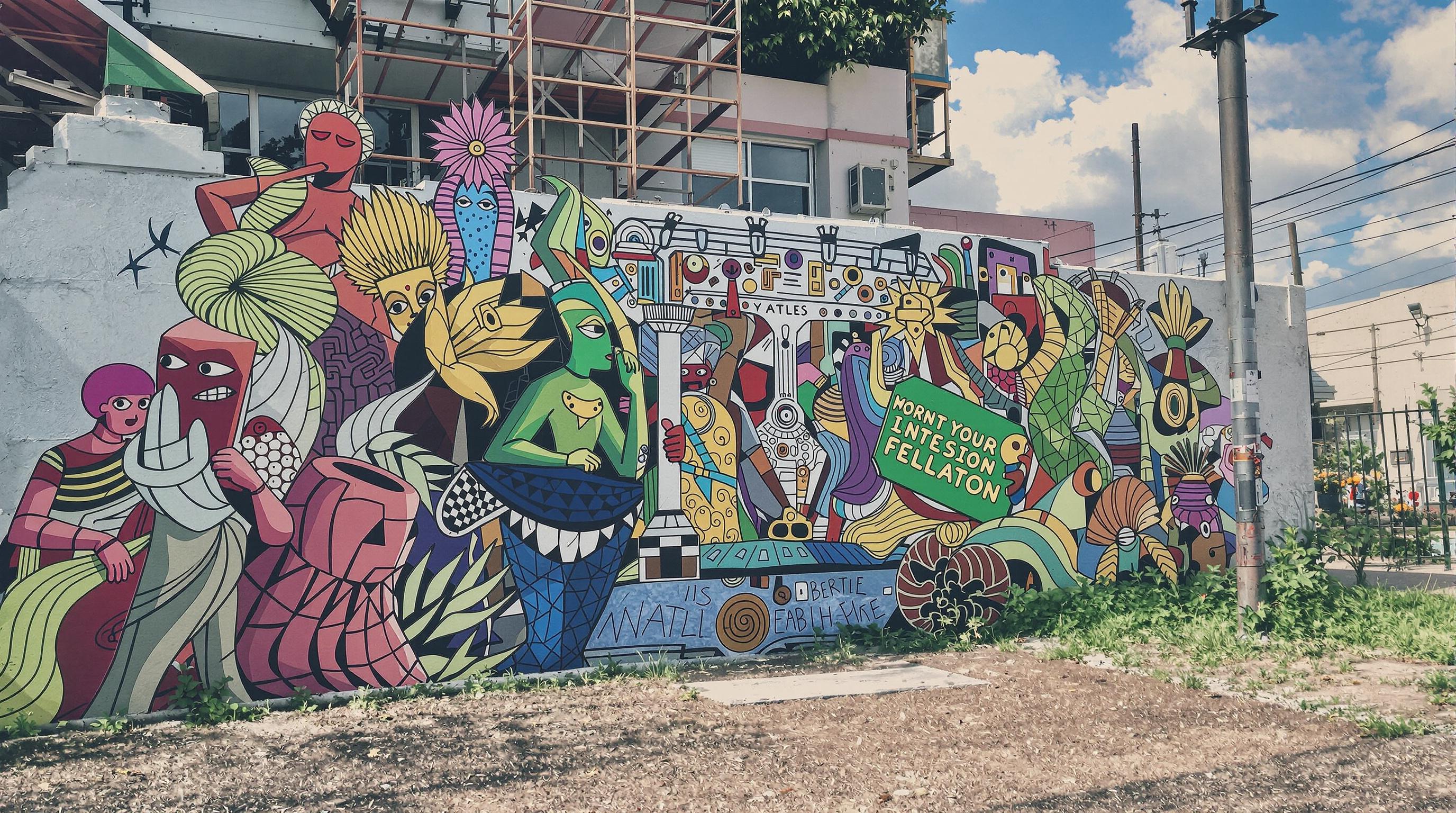Related Articles
- Harnessing Nostalgia: How Memory Mapping Can Inspire Innovative Urban Infrastructure Solutions
- Revealing the Invisible: How Urban Legends Influence Public Perception of Infrastructure Projects
- Whimsical Structures: How Playgrounds Can Inspire Innovative Approaches to Urban Infrastructure Development
- The Enigmatic Impact of Dark Fiber Networks on the Future of Digital Ecosystems and Their Capacity to Scale
- Beyond the Horizon: Exploring the Impact of Cultural Nuances on Global Digital Infrastructure Expansion
- Whispers of the Future: How AI-Driven Edge Computing Redefines Network Resilience and Flexibility
9 Unseen Factors: Leveraging Cross-Cultural Practices to Drive Effective Infrastructure Management Solutions
9 Unseen Factors: Leveraging Cross-Cultural Practices to Drive Effective Infrastructure Management Solutions
9 Unseen Factors: Leveraging Cross-Cultural Practices to Drive Effective Infrastructure Management Solutions
Introduction
Infrastructure management is a complex field that requires more than just technical skills and engineering expertise. It involves a deep understanding of the cultural contexts in which projects are developed and executed. Leveraging cross-cultural practices can significantly enhance the effectiveness and efficiency of infrastructure management solutions.
As global interconnectedness continues to increase, understanding diverse cultural perspectives is crucial for success in infrastructure projects. Cross-cultural practices can inform decision-making processes, enhance stakeholder communication, and promote collaboration across geographical boundaries.
This article explores nine unseen factors that harness cross-cultural practices to drive effective infrastructure management solutions, showcasing the potential for innovation that arises when diverse cultural insights are applied.
Factor 1: Communication Styles
Effective communication is fundamental in infrastructure management. Different cultures have distinct communication styles that can influence project outcomes. For instance, cultures with a high-context communication style may rely on non-verbal cues and shared context to convey meaning, while low-context cultures prefer direct and explicit messaging.
Understanding these differences can help project managers navigate potential misunderstandings and foster a more inclusive atmosphere. Adapting communication strategies to accommodate various styles can build trust among international teams, enhancing collaboration and effectiveness.
Furthermore, tools that support multilingual communication can empower teams to bridge language gaps, ensuring all voices are heard and understood throughout the project lifecycle (Hofstede, 2001).
Factor 2: Values and Priorities
Cultural values shape how individuals and organizations prioritize certain aspects of infrastructure management. For example, some cultures may place a greater emphasis on sustainability and environmental stewardship, while others focus on economic growth and efficiency.
By respecting and integrating these diverse values into project planning and execution, infrastructure managers can align their strategies with the expectations of local stakeholders. This alignment not only minimizes resistance but also maximizes community buy-in and support.
Incorporating local values into projects can lead to more sustainable outcomes, as seen in various case studies where culturally sensitive approaches have yielded positive results (De Jonge, 2019).
Factor 3: Team Dynamics
The composition of project teams often reflects a mosaic of cultural backgrounds. This diversity can contribute to richer brainstorming sessions and innovative problem-solving. However, it may also result in tension and conflict if not managed effectively.
Recognizing the unique strengths and perspectives that each cultural group brings can help in crafting harmonious team dynamics. Facilitating cultural intelligence training can improve team cohesion and increase the overall effectiveness of collaborative efforts.
Moreover, creating a culture of appreciation for diversity can lead to a more resilient team capable of tackling complex infrastructure challenges from multiple angles (Earley & Ang, 2003).
Factor 4: Conflict Resolution Approaches
Conflicts can arise due to differing cultural norms and expectations in infrastructure management. Understanding how various cultures approach conflict resolution is essential for effective project management.
Implementing a conflict resolution framework that acknowledges cultural nuances can promote a more collaborative and constructive approach to problem-solving, ultimately leading to better project outcomes (Ting-Toomey, 2005).
Factor 5: Stakeholder Engagement
Engaging local stakeholders is critical for infrastructure projects. Different cultures have unique customs and practices that dictate how engagement should be conducted. Understanding these practices can facilitate smoother interactions and better alignment of project goals.
For instance, traditional community leadership structures may play a vital role in local decision-making. Recognizing and incorporating these structures into engagement strategies can enhance local commitment and ownership of projects.
Moreover, involving stakeholders throughout the project cycle can ensure that the final product aligns with community needs and expectations, reducing the likelihood of post-project complications (Bryson et al., 2013).
Factor 6: Project Management Methodologies
Different cultures may adapt various project management methodologies based on their preferences and historical experiences. Understanding these methodologies can help managers tailor their approaches to fit the cultural context of their projects.
For example, some cultures may favor agile methodologies that promote flexibility and iterative processes, while others may prefer traditional waterfall approaches that emphasize structure and predictability.
By blending methodologies and adapting them to accommodate cultural preferences, managers can enhance project delivery and produce better results across diverse teams.
Factor 7: Risk Perception
Cultural background significantly influences how project teams perceive and assess risks. In some countries, a high tolerance for ambiguity might encourage innovative approaches, whereas in others, a cautious stance may dominate, leading to more conservative strategies.
Assessing risk through a cultural lens can help project managers understand stakeholder responses to uncertainty and develop strategies that resonate with their comfort levels. This can lead to more informed decision-making and risk management practices.
Ultimately, recognizing cultural attitudes toward risk can enhance project resilience, enabling teams to anticipate and navigate challenges more effectively (Hofstede, 2001).
Factor 8: Learning and Adaptation
Cultures have different learning styles that can influence how teams within infrastructure management absorb information and adapt to changes. Acknowledging these differences can enhance training programs and professional development initiatives.
Incorporating culturally relevant learning methods can boost skill acquisition and retention among diverse teams. This approach promotes a shared understanding of project objectives and facilitates smoother collaboration across cultural boundaries.
Encouraging a culture of continuous learning enhances adaptability, ultimately fostering innovation and resilience in the face of evolving infrastructure challenges (Senge, 2006).
Factor 9: Technology Adoption
The speed and style of technology adoption can vary widely across cultures. Some cultures embrace cutting-edge technologies eagerly, while others may adopt a more cautious approach due to concerns about usability or risk.
Recognizing these differences can inform how technology solutions are implemented within infrastructure projects. A customizable approach that aligns with cultural expectations can significantly enhance user engagement and overall acceptance.
Moreover, involving local experts in the technology adoption process can bridge the gap between innovative solutions and cultural readiness, ensuring that infrastructure management systems are effectively integrated into everyday workflows.
Conclusion
Leveraging cross-cultural practices in infrastructure management is not merely a bonus; it is a necessity in our increasingly globalized world. By recognizing and embracing the unseen factors outlined in this article, infrastructure managers can enhance their strategies, drive project success, and ultimately contribute to lasting community benefits.
As we continue to push the boundaries of what is possible in infrastructure, focusing on inclusiveness and cultural sensitivity will pave the way for innovative solutions that meet the diverse needs of global communities.
Incorporating these insights into infrastructure management practices can foster a more holistic and effective approach, setting the stage for a brighter and more interconnected future.
1. Bryson, J. M., Crosby, B. C., & Bloomberg, L. (2013). Creating and Implementing Your Strategic Plan: How to Guide for Public and Nonprofit Organizations.
2. De Jonge, A. (2019). Culturally Aware Infrastructure: Navigating the Challenges of Diverse Communities.
3. Earley, P. C., & Ang, S. (2003). Cultural Intelligence: Individual Interactions Across Cultures.
4. Hofstede, G. (2001). Culture's Consequences: Comparing Values, Behaviors, Institutions, and Organizations Across Nations.
5. Senge, P. M. (2006). The Fifth Discipline: The Art & Practice of The Learning Organization.
6. Ting-Toomey, S. (2005). The Matrix of Behavior: A Communication-based Culture Model.




